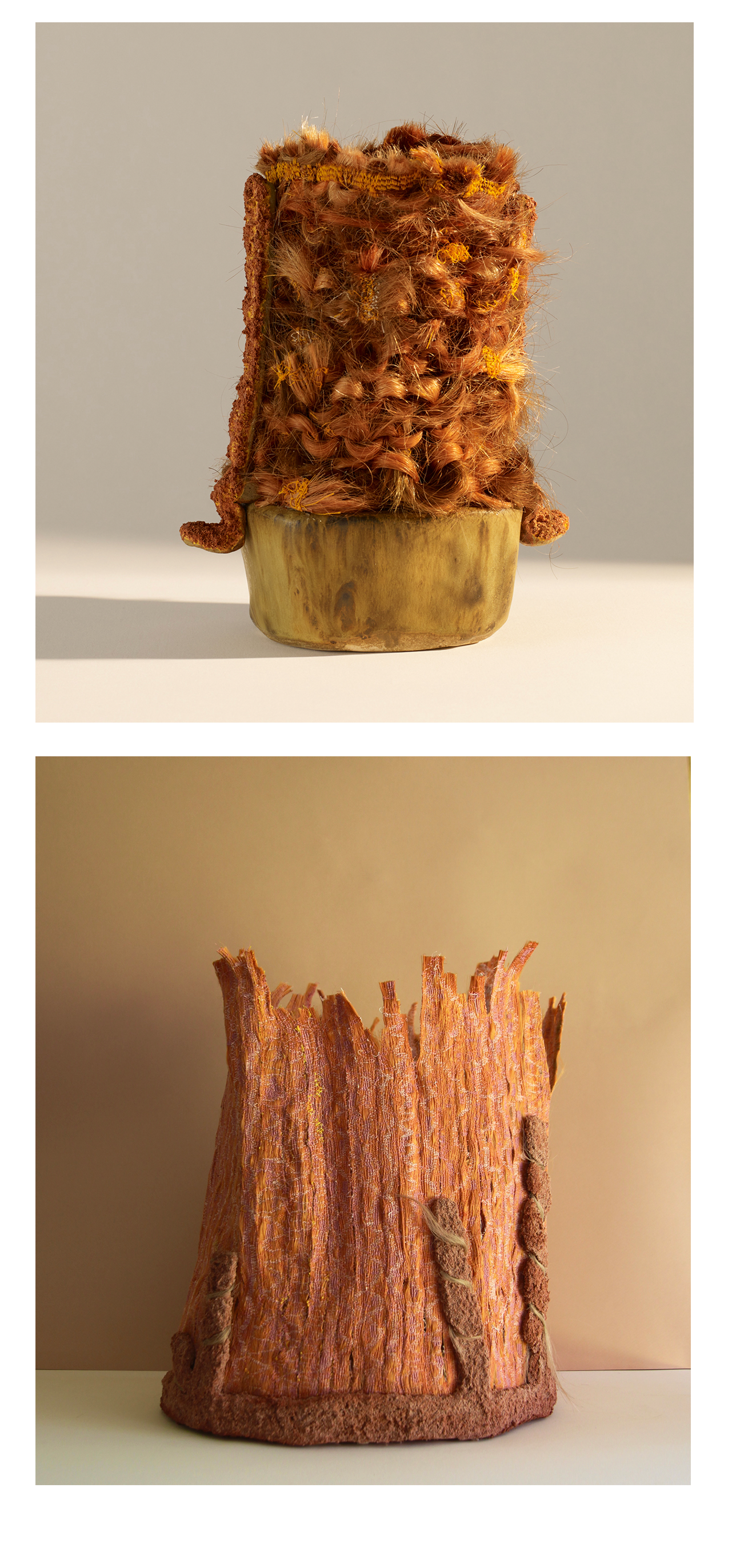Anouska Samms

Anouska’s current practice combines ceramics with textiles made from human hair to create a series of absurd, amorphous and ornate sculptures. Maternal symbolism is carefully reflected in the specific processes and materials Anouska adopts, which are chosen for their shared symbolic associations. Clay is a primary material in her work, regarded by many early societies throughout the world as belonging to the role of ‘woman/pregnant parent.’ This is combined with a universal mythic trope on weaving, where the warp and weft symbolises the ‘tissues’ of the child’s body woven into the womb of the parent. With clay pots often representing the womb, and hair creating the potential for disgust and bodily horror, there is a humorous nod at the purity and absurdity of mother and daughter exchange.
There is a very personal, autobiographical element to Anouska’s work. Whilst mitochondrial DNA within the hair shaft is passed from the pregnant parent to their children, mothers and daughters in Anouska family have passed down unconscious, yet unquestioned (until now) ‘rituals’ whereby the women dye their hair red. As fate would have it, Anouska was born ginger - with a bit of extra tinting here and there. Yet the chopping and changing of the individual identities of five generations of mothers simultaneously demonstrates a (seemingly accidental) inheritance and collective identity beyond DNA.
Where intricate patterns of hair are painstakingly knitted, woven, sewn, sculpted and even filmed - a maternal bloodline, and the rituals born from its lived relationships, are playfully examined as a way to uncover humorous, yet loving and even obsessive traits of intergenerational connection.
Her work has been displayed at London Design Festival, BFI Southbank and Mana Contemporary Chicago. With features from CNN Style, Deezen, Financial Times and Infringe Magazine.




